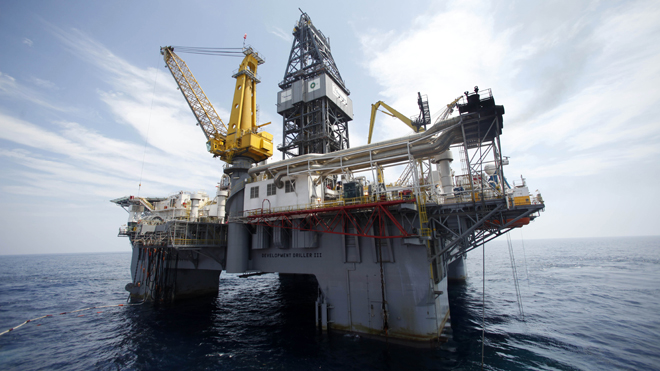Second 'Round 1' of Oil Auction Goes Much Better for Mexico

Mexico improved upon its disappointing July auction in its latest round; an improvement that could lead to deeper investment in the country’s oil sector.
In the second edition of Mexico’s “Round One” auction, the government successfully awarded three out of the five offshore production-sharing contracts on offer, a better outcome than the two blocks out of 14 that were awarded in July.
Mexico is seeking to increase its oil production, after more than a decade of falling output. The liberalization of its energy sector, ending seven decades of state control, was intended to attract international investment. Mexico is undertaking several rounds of bidding, auctioning off various blocks offshore and onshore. The first blocks on offer were for shallow water territory in the southern Gulf of Mexico near the states of Veracruz and Tabasco.
The timing is horrendous – oil prices are less than half of what they were when the government started planning for these auctions. Oil companies are tightening their belts, and with smaller exploration budgets, places like offshore Mexico are not at the top of the list in terms of priorities for many companies. Offshore projects require billions of dollars and several years of work to develop. The long term horizon is almost certainly deterring interest in new projects.
However, the one thing working in Mexico’s favor (and in the favor of the auction winners) is the fact that the government is offering proven reserves, areas that have already been discovered. So it is not as if the government and the companies involved are unsure if oil is actually in place in these blocks. “There is no exploratory risk” Juan Carlos Zepeda, president of the National Hydrocarbons Commission, said ahead of the auction, according to the Wall Street Journal. “The projects themselves are more attractive, less risky, so on the basis of that, I believe we should get a good result.”
In the latest round, Mexico tweaked its terms in order to attract more investment. The government is billing the September 30 results as a success. Italian oil giant Eni won a contract for several oil fields, including the Amoca, Mizton, and Tecoalli fields. Eni’s fields could hold 628 million barrels of oil.
Two other consortiums also won leases. One group of companies, consisting of Fieldwood Energy and Mexico’s Petrobal, won the rights to the Ichalkil and Pokoch fields. Another consortium made up of Argentina’s Pan American Energy and E&P Hidrocarburos y Servicios, won the Hokchi field.
The Mexican government projects that the winners will invest over $600 million in the three blocks awarded over the next three years. And over the next 25 years, the government expects $3.1 billion in investment.
The inclusion of Eni, in particular, was a bit of a coup for the government, which has been hoping to attract some of the oil majors to Mexican waters. Companies like Chevron and Royal Dutch Shell were qualified to bid, but declined to do so. The Italian company offered more than twice the minimum price set by the government.
In a sign of just how much interest has dropped in new offshore drilling, the United States just held an offshore auction for Gulf of Mexico leases that were similar in nature to what Mexico was auctioning off, and none of the oil majors decided to even bid. Mexico is pleased to have attracted Eni to its waters.
Moreover, the Mexican government hopes that the successful round could still allow it to achieve its ambitious production targets. The government of President Enrique Peña Nieto has targeted 3 MMbpd of production by 2018, up from the current 2.3 MMbpd. The tepid interest thus far in the shallow water fields threatens to derail these objectives, but the three bids awarded Sept. 30 could go a long way towards the country’s goal of reversing its slide in output.
There are two remaining auctions for the “Round One” offers, a December auction for onshore fields, and a deep water auction in 2016. The deep water auction will be closely watched, as the blocks expected to be offered are close to much larger oil fields located just across the maritime border in American waters.
Related News
Related News

- Keystone Oil Pipeline Resumes Operations After Temporary Shutdown
- Freeport LNG Plant Runs Near Zero Consumption for Fifth Day
- Biden Administration Buys Oil for Emergency Reserve Above Target Price
- Mexico Seizes Air Liquide's Hydrogen Plant at Pemex Refinery
- Enbridge to Invest $500 Million in Pipeline Assets, Including Expansion of 850-Mile Gray Oak Pipeline
- Enbridge Receives Approval to Begin Service on Louisiana Venice Gas Pipeline Project
- U.S. to Acquire 3 Million Barrels of Oil for Emergency Reserve in September
- AG&P LNG Acquires 49% Stake in Vietnam's Cai Mep LNG Terminal
- BP's Carbon Emissions Increase in 2023, Ending Decline Since 2019
- Texas Sues EPA Over Methane Emission Rules for Oil and Gas Sector




Comments